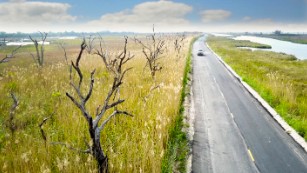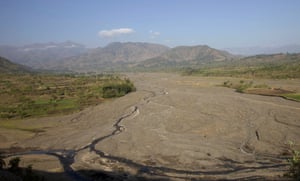By Nancy Coleman, CNN
Updated 1512 GMT (2312 HKT) June 21, 2017
A new study finds that Ethiopia, the world's fifth-largest coffee producer, could lose up to 60% of its suitable farming land by the end of this century because of climate change.

Your morning cup of coffee may not taste as good if climate change keeps pummeling Ethiopia, a study shows.
Story highlights
- Rising temperatures cause coffee beans to ripen too quickly and lose complex flavors
- By 2050, the global demand for coffee will double. But there will be half as much suitable land to grow it on
(CNN)What will it take for people to care about climate change? For some, the thought of a crummier cup of coffee in the morning just might do it.
A new study finds that Ethiopia, the world's fifth-largest coffee producer, could lose up to 60% of its suitable farming land by the end of this century because of climate change.
The study, published Monday in Nature Plants, found the combination of low rainfall and rising temperatures could have substantial effects on the coffee-growing areas in the country.
As temperatures steadily climb, so does the demand from coffee junkies, who might not be able to find a cup of joe that's up to their standards.
What this means for coffee drinkers
According to a report from World Coffee Research, the demand for coffee will have doubled by 2050, but the suitable land to grow it on will be cut in half.
And the effects of climate change don't just lower how much coffee is produced -- they can also hamper its quality.
In areas with lower temperatures, coffee quality is generally higher, World Coffee Research spokeswoman Hanna Neuschwander told CNN.
Cooler temperatures allow the coffee to ripen more slowly -- and that means more time to develop more complex flavor elements like acidity and sweetness.
But when temperatures rise, as they have slowly been doing in Ethiopia for years, the warmth causes the coffee to ripen too quickly, which means less flavorful beans.
A shift in quality is the main difference consumers will see. Even though a decline in suitable farming land would logically lead to a decline in supply, Neuschwander said it's not likely that coffee drinkers will see any hike in price.
Even if production drops in one country, such as Ethiopia, prices could drop at the same time in other major coffee-exporting countries, like Brazil or Vietnam, Neuschwander said.
"It takes a lot longer for consumer effects to travel," Neuschwander said. "It's a very distorted market as a commodity market."
What this means for Ethiopia's economy
Coffee junkies may not see any big changes in price, but the impact on Ethiopia's economy could be huge.
Arabica coffee production makes up about one quarter of the country's total export earnings. Fifteen million people, or 16% of the population, make a living through coffee farming.
Most of those coffee farmers are smallholders, according to World Coffee Research. Smallholders manage modest, usually family-owned farms, which means they might not have the resources available to adapt to these climate changes. With less ability to adjust, they are more likely to stop growing coffee altogether.
"The problem is coffee producers aren't paid enough, so helping them adapt to a very difficult complex, changing situation like you see with climate change and extreme weather events is very, very difficult to do," Neuschwander said.
What this means for the environment
Ethiopian coffee farmers have noticed climate changes that have harmed production, including warmer nights, a shorter wet season, irregular precipitation patterns and more extreme weather.
And there's science to back up the farmers' observations: Research cited in the Nature Plants study shows an uptick in warmer days in various areas where coffee is grown.
On top of the observable effects, Ethiopia's average annual temperature increased by 1.3 degrees from 1960 to 2006. That's a rate of .28 degrees per decade, and that average could push up temperatures another 3.1 degrees by the 2060s.
Ethiopia has also seen big changes in precipitation. Since the mid-1970s, rainfall has decreased by 15% to 20% in the southern part of the nation, and droughts have become more common in all parts of the country for the last 10 to 15 years.
None of this is great news for lovers of Ethiopian coffee, who may eventually want to look to other countries for their coffee fix.




